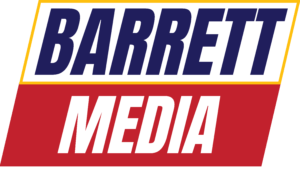This year, I didn’t go to the Consumer Electronics Show (CES) in Las Vegas, which took place earlier this month. I didn’t go last year, either, after years and years of dutifully heading to the convention right after New Year’s Day. Granted, nobody’s paying for me to cover the convention anymore, but I wouldn’t have wanted to cover it anyway.
Everybody in the media has been told that CES is a must-see, that the very future of everything (including communications) appears first at the event, and that if you want to know radio and TV’s future, you have to be there. Years ago, maybe, that was the case. Now, not so much. No, radio operators, you really don’t have to go to CES to divine radio’s future. You know what the future of radio is. Wandering around an exhibit hall filled with this year’s iteration of a flying car won’t change that.
There is a lesson to be learned for radio, and for other media and, really, for any business. Every year, CES has a “next big thing” on which attendees are urged to jump, and it’s implied that you’re seeing the future and if you wait to latch on, you’ll be left behind. The problem is, most of what you see and hear at CES isn’t at all what the future will be like, or it’s an overblown, overstated version of what’s coming next.
Remember 3D TV, the crown jewel of CES for at least three years straight? Or how smart speakers were going to take over the world? That’s the kind of thing CES has promoted since it morphed from a primarily TV-oriented show to an anything-goes event. And, let’s be honest, most of what’s shown and discussed at CES is either dead on arrival or going to be implemented in such a minor way that it won’t be critical to your business, or the general public.
Smart speakers weren’t the real story, it turned out; voice control has shown up everywhere, but being able to change channels on your TV by speaking into the remote or changing audio in the car with a voice command are really just making what we can already do a tiny bit easier. Nice, but not revolutionary, and when was the last time you downloaded a new skill to your Alexa device? (I’m not even going to ask how many of you bought 3D TVs.) The self-driving car, an annual CES favorite, is still too buggy to be consumer-grade, and the smart city – delivery drones, futuristic public transit, 5G everywhere to connect everything – is still a concept of a plan.
But, as I saw every year at the conference, your refrigerator and dishwasher now have WiFi, not that you asked for it.
And there it is. You didn’t ask for your appliances to connect to the internet. Not too many people trust their cars to drive themselves, and the stories of Teslas in “this is not intended for self-driving (wink wink)” mode crashing don’t inspire confidence. You didn’t buy a 3D TV because a) the 3D effect needed glasses to work and caused headaches, and b) there wasn’t any content in 3D. You can say that the wearable tech category is an exception, but most of that energy has been sucked up by the Apple Watch, which wasn’t unveiled at CES.
The bottom line is that CES is a festival of stuff nobody asked for and nobody really wants, other than the medical devices that really are significant advances and get ignored by the media coverage, which tends to really love robotic dogs and drones.
Nobody seems to pay much mind to what consumers want. It’s a race to create things because you can. Engineers and techies don’t know what the consumer wants, because they’re all racing to grab that sweet, sweet private equity cash. Who wants a WiFi-connected toaster or a Bluetooth recliner? What consumer need does that fill that isn’t already filled by boring analog methods? Does everything have to be digital?
Not really, and that’s a lesson for radio and the media in general. When you create content intended for maximum commercial impact, you need to find out if your audience wants it. Research helps, but it’s more than music tests; you need to be researching what the audience wants from you that it’s not getting now.
Otherwise, you get technology in search of a market, and radio stations that underperform, and an industry struggling as people vote with their credit cards — no, we don’t need more of the same old commercial-burdened music radio and stereotypical talk radio when Spotify and podcasts exist (both of which CES utterly missed).
The critical thing you need to know about consumer electronics that affect what you do is something you already know: the smartphone is the everything device. Your content is going to end up streaming on people’s iPhones, competing with a practically infinite array of content. That means you have to provide something better that people want.
You don’t need a convention to figure that out. Besides, we still haven’t gotten flying cars or jetpacks.
Barrett Media produces daily content on the music, news, and sports media industries. To stay updated, sign up for our newsletters and get the latest information delivered straight to your inbox.

Perry Michael Simon is a weekly news media columnist for Barrett Media. He previously served as VP and Editor/News-Talk-Sports/Podcast for AllAccess.com. Prior to joining the industry trade publication, Perry spent years in radio working as a Program Director and Operations Manager for KLSX and KLYY in Los Angeles and New Jersey 101.5 in Trenton. He can be found on X (formerly Twitter) @PMSimon.









